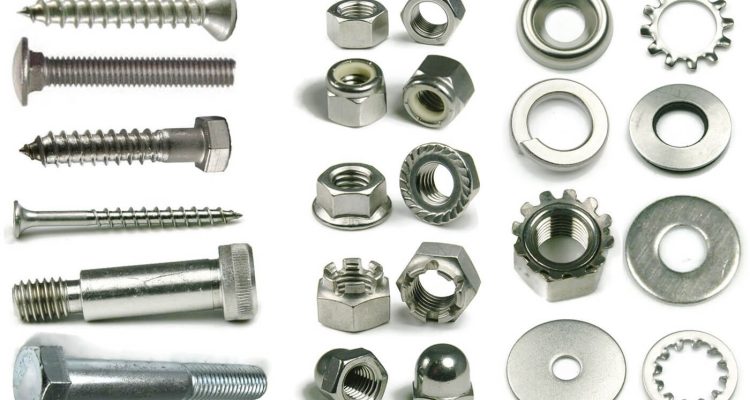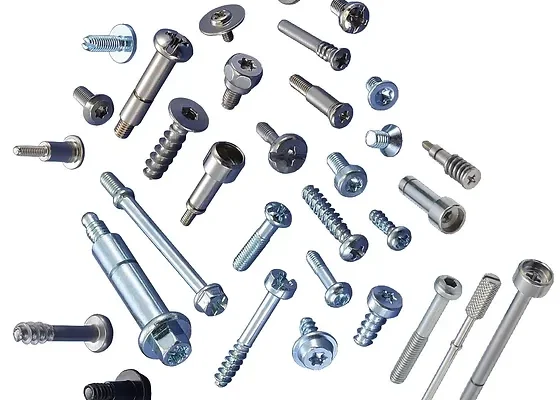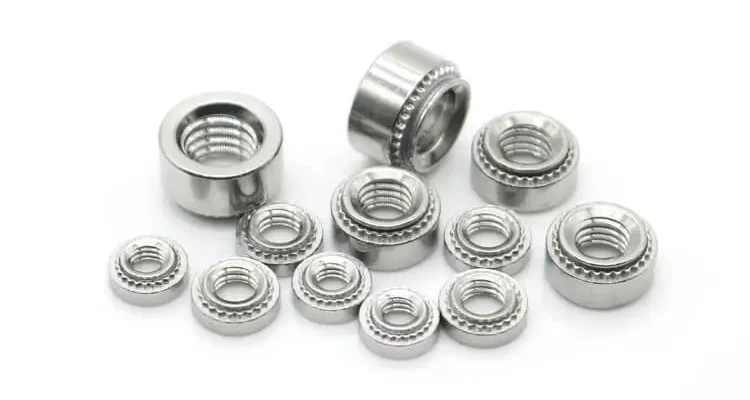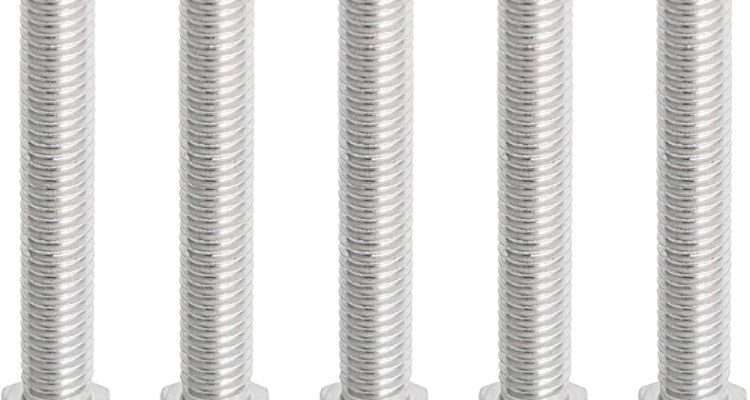
What Is The Difference Between Studs And Bolts
Studs and bolts differ primarily in design and application. Studs have threads on both ends and are used for connecting two components with nuts on each end, while bolts have a head on one end and are threaded into a single component. Studs typically offer higher load-bearing capacity and are longer than bolts, making them suitable for more demanding applications.
Purpose and application scenarios
Heavy-Stress Environments (i.e. Studs)
Automotive Engines:
- Used for: Studs are a must in areas which undergo the most stress (anything that requires two components to be bolted together tightly) They make sure that the head and block of an engine stay bolted tight enough to hold in high pressure, high heat combustion gas.
- Example: Cylinder head studs are used to attach racing cylinder heads to an engine block in high-performance engines. This ensures a tight retention of the head to avoid leaks and maintain optimal compression another critical factor in their engine performance.
Construction Fleet and Heavy Equipment:
- The stud, used as loose or in form of weld nuts directly welded to the structure stands out for being a versatile structural element that is perfect and highly secure connection systems. These are required to operate at high loads and stresses, do they have no other option than being used in this area as well.
- For instance, studs are used in the creation of steel beams for high-rise construction. This in turn guarantees the tensile stability of the entire installation, since studs can cope with extremely high levels of stresses and loads common for skyscrapers.
- For instance, in heavy machinery etc. studs are used to secure big components such as gearboxes and engines too! Studs have a higher load bearing capability that keeps in place these important elements so much better, than you would with heavy machinery at play.
Bolts In Everyday Life
Household Furniture:
- Example : Bolts are commonly used for fixing the legs of tables, create joints with different parts within machines and assemble a multitude of items in our homes.
- E.g. bolts on flat-pack furniture allow for assembly and disassembly with ease For individuals moving often or the spirit of changing packing – this is a welcomed feature.
Machinery Assembly:
- Application: Bolts keep parts against each other, so that they do not move or get wear on (All connection by bolts is called a bolted link.
- For: while putting together conveyor systems, bolts are employed in attaching the engine as well as rollers towards body. This keeps all the parts tightly secured in place, so that system operates smoothly and efficiently.
Electronic Devices:
PrincipalService: Bolts are employed by making electronic products where they make use of the bolts in locking their components securely in place. This is important to prevent damage and also workability of electronic products.
Maintenance and Replacement
Removal and Reinstall, Being Easy:
- Key Use: Bolts are used in areas which have need of matrimonial maintenance or part replacement as it makes the disassembly and re-energizing stage easier.
- If you are like, machines in manufacturing plants require regular maintenance. Making all parts accessible from the inside by bolts to ensure that they do not damage any part in operation. This minimises any downtime and maintenance costs.
Metal Building Construction:
- Bolts: Bolts are used as a means of fastening to connect beams and columns for structural integrity and ease installation, etc.
- Ex:-The connection created using bolts for metal building construction allows the framework to be quickly and easily assembled. Especially in the case of projects with short deadline where speed and accuracy are everything.
Specialized Applications
Studs:
- Plain Usage: Studs Published for All Situations Where Rapid and Accurate Line-up or Stress Distribution is Required This guarantees that all components are positioned precisely and held in the correct place.
- Test case: For the aerospace sector, studs are used to fasten elements such as turbines blades. The little misalignments will result in major performance issues for such applications. Blades are attached securely by studs to make the engine functioning efficiently and making it reliable.
Bolts:
- Typical Use: Bolts are used in countless automotive to electronic applications. Their multiplicity and individual use make them a common choice amongst diverse industries.
- For instance, the automotive manufacturing uses a huge range of bolts to assemble many parts of an automobile including pods shells, suspension beams and interior items. Their insubstantial presence and removable nature render them the perfect solution for these types of applications which require part replacement or maintenance. Bolts are required to bridge strong, secure connections that improve the safety and performance of every vehicle.

Differences In Installation Methods
Stud Installation Methods
- While studs are threaded at one end to be inserted into a part of the component, stud bolts have threads on both ends with or without nut. This creates a robust and consistent joint, which is essential for high-tensile strength applications or where there may be vibration present.
- Prep: Make sure all connecting parts are clean of any dirt. The strength and quality of a thread or done connection can be compromised by any sort of contamination.
- Thread Engagement: Screw one end of the stud into the pre-threaded hole on first component. Be sure to start the stud by hand so you will not cross-thread it. Thread engagement must be min. 10mm for a M10 standard stud.
- Now Mop It Down ~ Tighten stud with 265 ft/lb of torque and make sure it is also seated. Depending on the material and application, M10 stud torque value is usually 20-30 Nm.
- Nuts Install: Put a nut on both sides of stud. The first nut against the component, then second one. Torque to 40 Nm is typical for an M10 stud using a torque wrench.
- Final Inspection: Examine the assembly to make sure that both nuts are tight and the stud is centered The more out of place a bushing is, the higher likelihood that load will not be distributed uniformly and this can lead to stress failure in some cases.
Bolt Installation Methods
- A bolt is either screwed directly into a pre-tapped hole or fitted with one, and then fastened to the holding object it passes through by using tension dominated techniques. This is a basic, common-application for rapid assembly.
- Before Assembly: Ensure the bolt and pre-tapped hole are clean. Inspect threads for any damage that may hinder installation.
- Thread Engagement – Screw the bolt into the hole by hand to keep it from cross-threading. Only guarantee 10mm of thread insert in M10 bolts
- Tighten the Bolt: With a socket or wrench, tighten the bolt. For example, an M10 bolt could have a torque value of either 20-40 Nm according to material and application.
- Install a Nut If the bolt needs to otherwise get tightened with a nut, then slide the nut on behind it (opposite of your component) and thread it onto the bolt. The nut is tightened using a spanner; it must now simply hold. Basic torque for an M10 nut is around 30 ~ 50 Nm
- Check: Confirm balance pin assembly is installed and nut, if used, tight. No gap between the bolt head, nut and joint components
Comparison Of Load-Bearing Capacity
The Load-Bearing Capacity of Other Studs
- Studs often possess a higher bearing capacity than bolts This is because they have more material in contact with the threads, giving them a large surface area to distribute the weight. An M12 studged used in an automotive engine, for instance can generally handle a tensile strength of up to about 120Kpsi making it strong enough to maintain a significant amount of stress and vibration.
- Material Strength – Studs are generally made of high strength material such as alloy steel/stainless-steel which makes them sturdy and capable to bear a considerable load. For example, an alloy steel stud might have a yield strength of 105k psi for use in high-stress applications.
- Engagement Pressure: The full thread engagement of a stud makes sure that the weight is distributed evenly over its whole length. It is important for applications, such as structural steel frameworks — where M16 studs could be used to tie beams together and a single stud may need to handle up 180,000 pounds.
- Distribution of stress: Studs distribute the load evenly because they have nuts on both ends. It is these engine block studs that are utilized in securing the largest heavy machinery, like a bulldozer. An unassuming connection but one necessary for it to hold against all the operational loads and vibrations work puts upon machines at this size class. A standard M20 stud might hold a load of about 200,000 lbs in this case.
Load-Bearing Capacity of Bolts
- Although bolts are much more stronger, their load carrying capacity is less as it used to be in case of studs. The typical bolts are designed to thread into one part, which limits the amount of threading in and surface area available for load dispersion.
- Fastening Material and Design: Bolts are also created using tough materials but the design can decreases load capacity. As an example, a typical M12 bolt made from carbon steel has about 60 kpsi of tensile strength and would be appropriate for manyif not most applications- except it is lower than that oftentimes cited number for stud.
- Shorter Thread Length: Because the pipe fitting has threads, less surface is available to handle loading. For manufacturing a piece of equipment or machinery, commonly an M10 bolt rated to withstand approximately 50K lbs is chosen which covers a majority but not all types of industrial uses.
- This partake is the best so less load-bearing capacity is needed, and as such communicates by mean of perfect intention too. As an example, M8 bolts are widely used to assemble metal furniture and this is acceptable for its use since it can hold a load of up 30lb.

Differences In Length And Specifications
Length of Studs
- Aother universal aspect of studs in their length (which is typically longer than that of a bolt), because the stud expands between two components, with nuts on each end. This design requires a longer length to secure the joint.
- Standard Lengths The length studs can take really range depending on the application. An obvious example is a simple length property, where studs used in construction might be between 50mm and over 500 mm long. You may also find an M20 stud, the standard for heavy machinery and available up to 600 millimeters long or more.
- Bespoke – custom lengths are needed for some industrial applications. For example, in the aerospace sector alone management for a variety engine installations ranging from 100 to 800 millimeters could even result into specially manufactured studs.
- Engagement Requirements: Thread engagement for fastening also governs minimum length. Longer studs are crucial for the sake of maintaining the integrity of more threads on high-load applications. For structural applications, an M24 stud can be used and the need for a length up to 700 millimeters in order to spread the load is not unusual.
Specifications of Studs
- Thread types: Threads of Studs are available in a number of standard specifications such as Unified National Fine (UNF),Unified National Coarse by(UNC) threads, metric thread sizes. An M10 stud with a UNF thread would have 1.5 threads per mm, meaning more adjustability and strength for the same size fastener.
- Size and step: Studs are available in sizes from small M6 (use light duty) to large ones such as M36 (for heavy industrial use). The pitch -or the distance between them- changes thus. For example, an M12 stud could have a pitch of 1.75mm and a chaser designed for that size will be set to cut threads out approximately one turn in three while chasing the part with this thread specification-but if you are angling more into large-size bolts say even up to M24 or greater then it might take around 3 mm worth on each retraction pass that makes them especially attractive offers equal numbers between multiple different-sized studs altogether!
Length of Bolts
- Bolts are relatively shorter than studs as they have to maintain a single component on the structure or material. Usually the length of bolts is based on joint materials thickness and level of engagement with threads.
- Bolts are available In standard lengths from 10 millimetres to 300 millimetres. If the bolt is an M8 grade 4.6 and used in a machine assembly, it might range from under 20 MM to over 80MM long;
- Car engine components might require shorter bolts, around 50 to 100 mm in length for application as the compact size. Conversely, the length of bolts for structural will range from 125 to as long as 250 mm if used on thicker materials.
Specifications of Bolts
- Types of Threads: Bolts are also available in the same threading types as studs (e.g., UNF, UNC and metric thread). An M16 bolt with a UNC thread may be considered to have 2 millimeters per thread, giving large engagement strength for use in construction.
- Diameter ( D) and Pitch : bolts range in size from very small ones used for electronics, to big sizes for industrials purposes eg M4 is small anmd often use din.Bus Hubs application, while trhe largest we have sold here at e.g. was a diameter M30 Bolt Bushing width of 1 inch (. For example, an M12 screw could have a diameter of 12 millimeters and a pitch of 1.75 millimeters fine for all-purpose fastening actracements.



